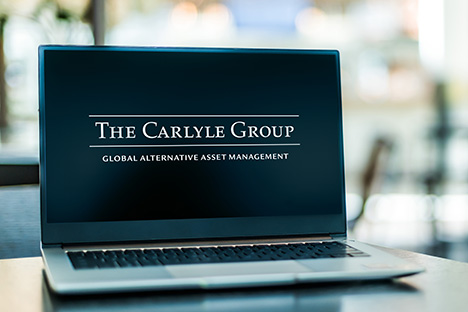I recently ran a stock screen for companies with large dividend yields and low price-to-earnings (P/E) ratios.
Popping up on that list was one of the world’s top investment firms: Carlyle Group (Nasdaq: CG).
At the end of 2022, Carlyle managed a whopping $373 billion in assets, which were split across its private equity, credit and global investment solutions funds.
Over the past 18 months, Carlyle’s stock price has had a rough ride. And after peaking late in 2021, shares of Carlyle have been cut in half.

That share price drop is why the company is now popping up on my stock screen.
For 2022, Carlyle earned $3.35 per share. With a current trading price of about $31, the stock is trading at just 9.25 times earnings.
That looks interesting… Single-digit P/E ratios always do.
So too does Carlyle’s current dividend yield, coming in at 4.2%.
That alone is a decent investment return.
On the surface, these numbers make Carlyle look like a compelling buy.
When I dig a little deeper, though, the story becomes considerably more complicated…
Specifically, it’s very hard to predict how much money Carlyle is going to make each year.
Some years, the company makes a lot of money. Other years, it doesn’t.
Over the past five years, Carlyle’s earnings per share have looked like this…

Those earnings don’t exactly create a smooth chart that moves upward and to the right!
Carlyle’s earnings are so lumpy because the investment manager earns performance fees when gains are realized and if investing performance hurdles are met.
When investments boom, so too do Carlyle’s earnings.
On the flip side, when investments lag, the performance fees fall off.
That isn’t a problem necessarily. In fact, earnings cyclicality is just the nature of Carlyle’s business. Over time, the company makes a lot of money.
But this inconsistency makes it hard for external investors to predict where Carlyle’s earnings are going.
And if you can’t predict earnings with any accuracy, it becomes very hard to determine whether the trading price of the stock is a bargain.
This unpredictability is why Carlyle has always traded at a rather low P/E ratio historically.
Over the past five years, Carlyle’s average P/E ratio has been 11.4 and its median P/E ratio has been 9.8.
With that context, the current 9.2 ratio that Carlyle is trading at doesn’t look like such a screaming bargain. It looks more like what the stock typically trades at.
I like this company and its dividend. Over time, I think it will do well as it grows assets under management.
However, given that the stock trades right in line with where it historically has, it’s hard for me to say that Carlyle is undervalued.
Therefore, The Value Meter rates Carlyle Group as “Appropriately Valued.”

